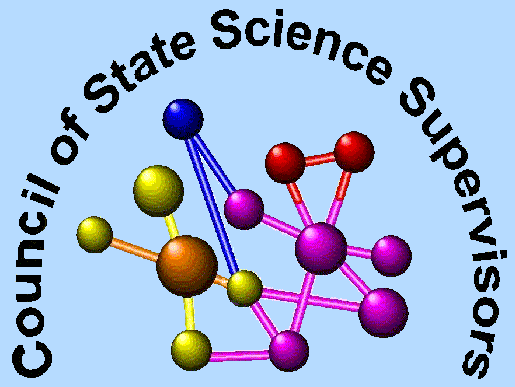HistoryFew state level subject matter specialists existed prior the enactment of the National Defense Education Act (NDEA) in 1958. That act provided funding for the employment of mathematics, science, foreign language, and eventually reading and social studies supervisors in most of the fifty states. After meeting for a few years to discuss state and national level concerns during or prior to the National Science Teachers Association's National Convention these new state science specialists formed the Council of State Science Supervisors (CSSS) on March 28, 1963 in Philadelphia, Pennsylvania. A constitution was approved and Franklin Kizer (Virginia) was elected the organization's first President. In its early years, CSSS existed as an unincorporated organization and could not receive direct grants to hold meetings for its own members’ professional development. Additionally, CSSS could not be awarded contracts to perform services for federal and national agencies. Therefore, CSSS often formed partnerships with universities; among them were the University of Texas, the University of Virginia, and Portland State. These university partnerships served as CSSS's agents in obtaining such grants. In the late 60's, CSSS recognized the need to apply directly for grants and negotiate its own terms. This led to CSSS incorporating as a nonprofit entity in the state of Virginia. The current registered agent of the corporation is Michele Snyder (AR) who is the current CSSS Director of Operations. In 1979, CSSS contracted with the National Institute on Occupational Safety and Health (NIOSH) to cooperatively develop a training manual on Safety in the School Science Laboratory. This publication was followed by a Manual of Safety and Health Hazards in the School Science Laboratory in 1980. The identification of some hazardous chemicals in these publications led to the need to develop standards for identifying chemicals that were deemed hazardous when used in the school environment. As a result the U.S. Consumer Product Safety Commission joined with CSSS in developing the 1984 publication, School Science Laboratories: a Guide to Some Substances. These publications have served as the foundation documents for many of the school laboratory safety manuals and associated training efforts of the states. CSSS also developed a partnership with IBM which led to the development of PSInet, the first nationwide computer network for science supervisors. In the early 1990’s with the advent of the Internet and increased connectivity among states CSSS created the current web page and is presently connecting with its membership through several topic-specific listservs. Since the inception of CSSS in 1963 members and leadership have been involved a number of important initiatives that support science education. In the past CSSS members have served on AAAS's Project 2061 and NSTA’s Scope, Sequence, and Coordination Project and, more recently the NRC’s Conceptual Framework for New Science Education Standards Committee, Next Generation Science Standards Writing Team, and Board on Testing and Assessment’s Committee on Developing Assessments for K-12 Science Proficiency. Since 1983 CSSS has partnered with the National Science Foundation on its Presidential Awards for Excellence in Science and Mathematics Teaching (PAEMST). Each year, this program identifies outstanding K-12 teachers of science and mathematics from the 50 states and four U.S. jurisdictions. The program seeks to enhance the status and visibility of the teaching profession and to demonstrate the importance of good teaching. The Council has administrated the state programs for the science portion of the program and lists many CSSS members the state coordinators for each state. Presidents of the Organization Follow links for autobiographical accounts of CSSS activities during each term.
Organization Logos The first CSSS logo was blue and white and contained the Sun, a DNA Double Helix, and just below that two children looking at the night's sky. In the upper right hand corner was a rocket orbiting the Earth. In the early 1990's C. J. Evans designed the logo currently in use. |
 Council of State Science Supervisors
Council of State Science Supervisors 
